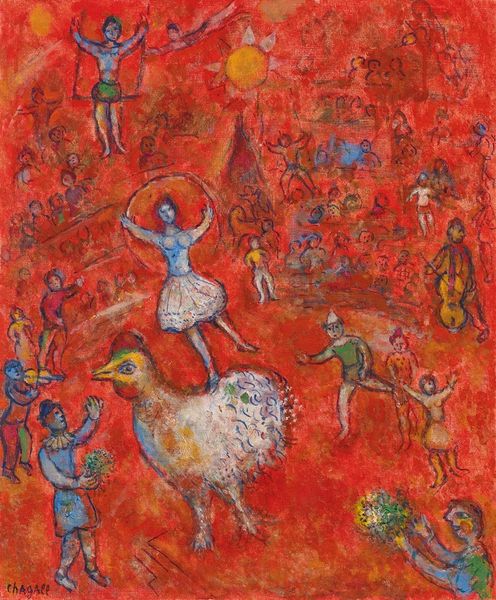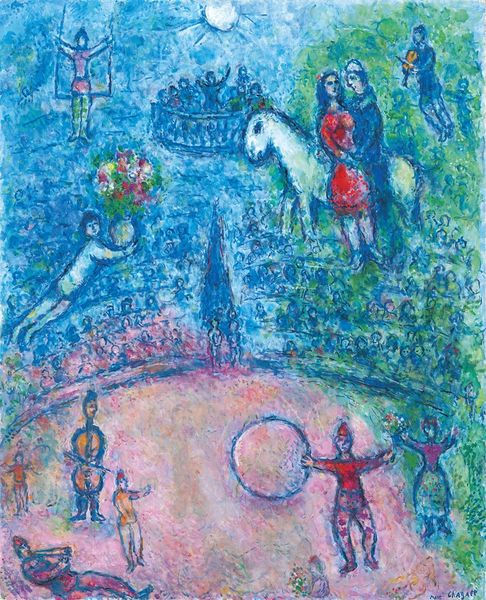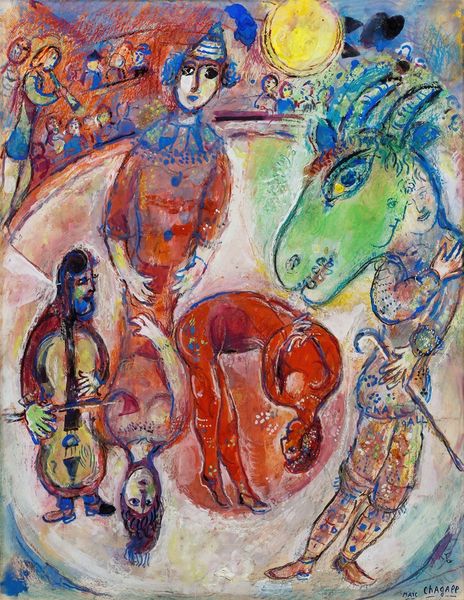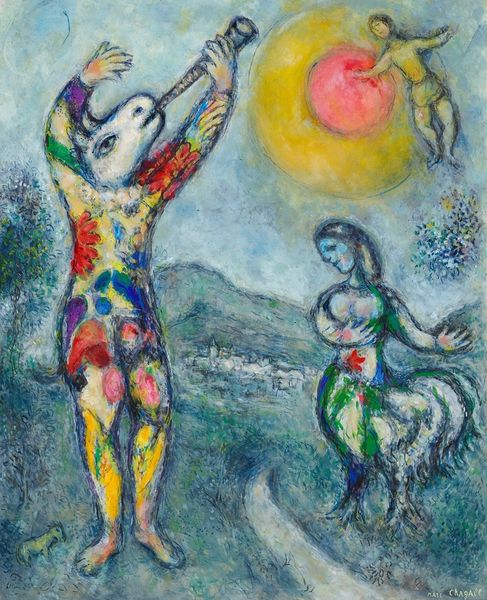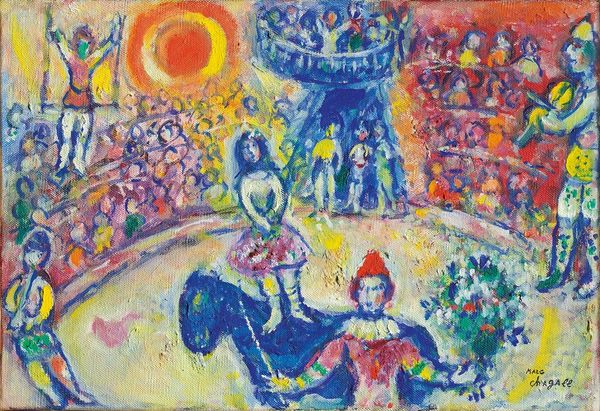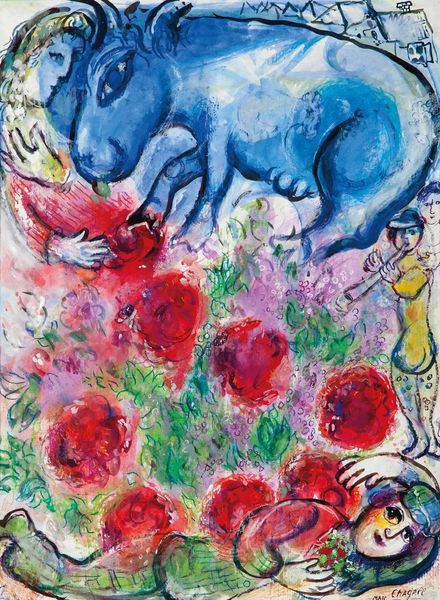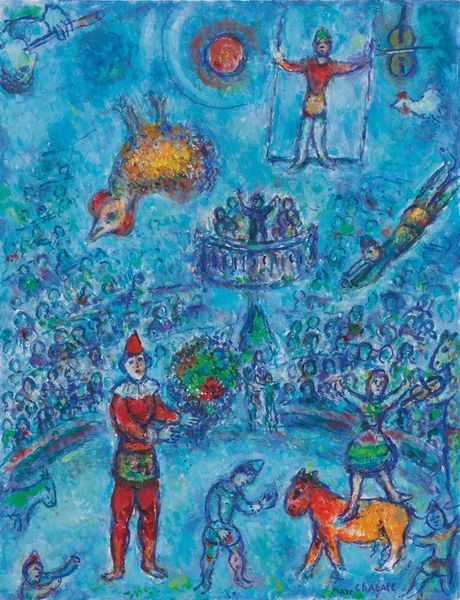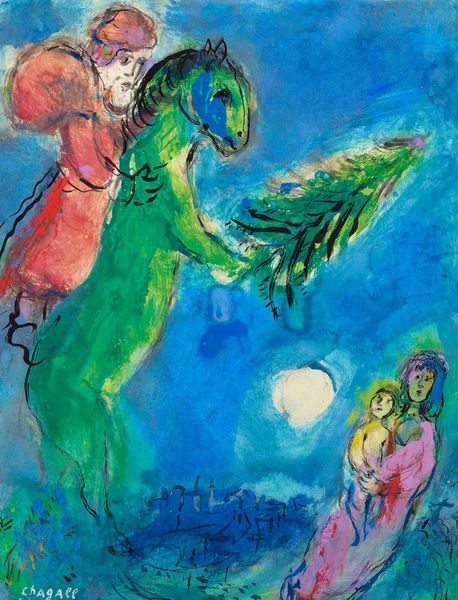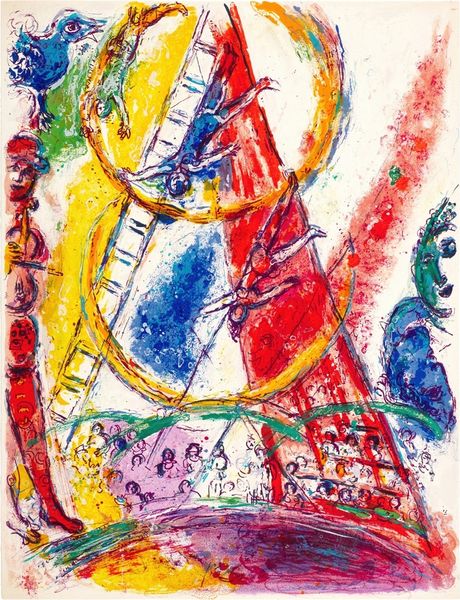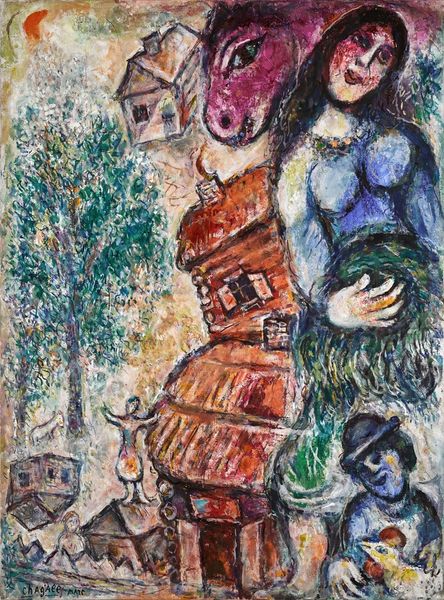
Copyright: Modern Artists: Artvee
Editor: So this is Marc Chagall's "Ecuyère sur cheval vert au cirque," made between 1979 and 1980 with oil paint. It feels almost dreamlike, the colors are so vibrant and the composition is so dynamic, especially with all the figures floating around. What do you see in this piece? Curator: The formal aspects of the painting are striking, aren’t they? Consider the chromatic scale—the juxtaposition of that intensely saturated red against the cool greens and blues creates a palpable visual tension. And the spatial relationships! Chagall isn't concerned with conventional perspective. Editor: Exactly, it’s like the figures are weightless! Curator: Precisely! The pictorial space is flattened, rejecting deep recession in favour of a more symbolic representation of depth. Observe how line operates – it's almost calligraphic, defining form but also functioning independently as a decorative element. It seems like his unique handling of paint is very symbolic and creates more emphasis. Editor: That's a great point, the lines seem to almost dance around the figures. Does the composition contribute to the Fauvist quality as well? Curator: Inarguably. Although Chagall is associated with various movements, Fauvist principles—the prioritization of color and emotive expression over realistic representation—are demonstrably present. Consider, for example, the deliberate disharmonies in the palette. Editor: That makes a lot of sense! I never looked at it that way, seeing past the dreamlike subject matter. Curator: Sometimes, an initial response must yield to close looking. Editor: I agree! I'll be sure to carry these methods for close looking throughout my study of art. Curator: The synthesis of subjective feeling and formal strategy is something every artist wrestles with. I believe you'll carry that through your entire practice as well!
Comments
No comments
Be the first to comment and join the conversation on the ultimate creative platform.
